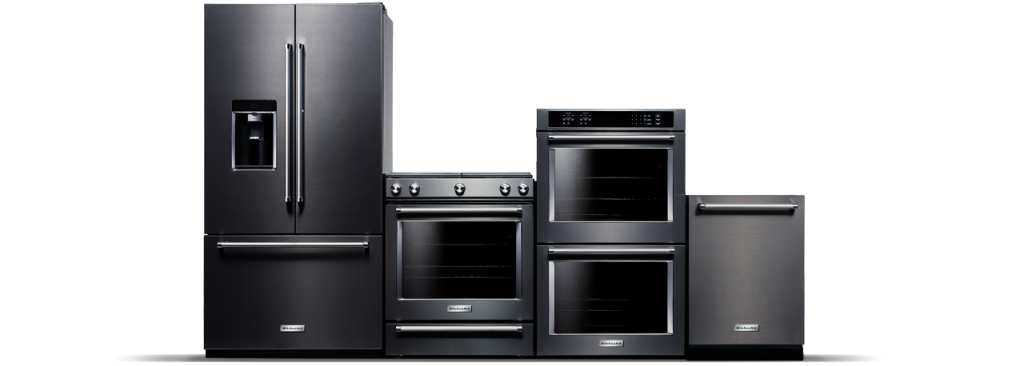British households spend an average of 4% of their total expenditure on energy, a figure that rises to 8.40% for low-income households. The average duel fuel bill for a customer of one of the Big Six energy suppliers currently stands at £1,117. But where are all of those charges coming from? When you turn on your dishwasher or crank on your gas hob, how many pence, or even pounds, are you spending?
A smart meter can help you pinpoint how much you’re spending in energy, in kilowatts per hour and sterling. But you won’t be able to tell if your laundry schedule is costing the equivalent of a Netflix subscription or how much five minutes in your microwave is adding the price of your ready meal, and these things add up, even if you have been able to find the cheapest energy tariff on the market.
Really, unless you have a coin-operated washing machine from a laundrette, you’ll never be able to tell exactly how much your dark load is costing, especially once you factor in water. But some idea about the energy requirements of appliances and the cost of each unit of energy can help you make a good guess, and modify your habits in the kitchen to find savings on your monthly energy bill.
Electricity
Every electrically-powered device has a power rating that tells you how much energy it needs to run, in watts (W) or kilowatts (kW).
Standard power rating of kitchen appliances
Refrigerator: 40-120W
Freezer: 150W
Fridge-freezer: 200-400W
Dishwasher: 1050-1500W
Microwave: 600-1500W
Oven: 2000-2200W
Hob/stove: 1000-2000W
Extractor fan: 5-35W
Kettle: 2200-3000W
Toaster: 800-1500W
Deep fryer: 1200W
Washing machine: 1200-3000W
Tumble dryer: 2000-3000W
However, the power rating of an appliance is only half the story about its energy consumption. A low wattage refrigerator will consume more electricity than a dishwasher simply because it’s on all the time.
Energy is measured, and charged for, in kilowatt hours, or kWh. You can determine the kWh your appliance uses by multiplying its wattage (divided by 1000, to get kilowatts) by the number of hours you use it. Your freezer is running all the time, to keep your ice cream cold, but do you have any idea how many hours your ran your dishwasher over the previous year?
Luckily, carbonfootprint.com has calculated the average kWh usage of kitchen appliances, per use and over a year. (Some data also taken from the Energy Savings Trust. Estimates vary.)
Average energy consumption of appliances
Refrigerator: 162 kWh/year
Freezer: 327 kWh/year
Fridge-freezer: 408 kWh/year
Dishwasher: 1.07 kWh/use, 118.77 kWh/year
Microwave: 0.945 kWh/use, 90.72 kWh/year
Oven: 1.56 kWh/use, 210.76 kWh/year
Hob/stove: 0.71 kWh/use, 301.04 kWh/year
Extractor fan: 11.7 kWh/year
Kettle: 0.11 kWh per use, 169.62 kWh/year
Toaster: 21.9 kWh/year
Deep fryer: 52 kWh/year
Washing machine: 0.63 kWh/use, 117.81 kWh/year
Tumble dryer: 2.50 kWh/use, 370 kWh/year
To determine the cost of running these appliances, multiple their energy consumption in kWh by the average per-unit cost of electricity in the UK: 14.5p per kWh.
Refrigerator: £23.49/year
Freezer: £47.42/year
Fridge-freezer: £59.16/year
Dishwasher: £0.16/use, £17.22/year
Microwave: £0.14/use, £13.15/year
Oven: £0.23/use, £30.56/year
Hob/stove: £0.10/use, £43.65/year
Extractor fan: £1.70/year
Kettle: £0.02/use, £24.60/year
Toaster: £3.18/year
Deep fryer: £7.54/year
Washing machine: £0.09/use, £17.08 kWh/year
Tumble dryer: £0.36/use, £53.65/year
As you can see, freezers and fridge freezers are the costliest appliances to run. You can notch savings by opting for more energy efficient models. Carbonfootprint.com has found that a fridge-freezer with an A++ energy rating burns just 206 kWh per year, compared to 408 kWh per year one with an A energy rating does. That difference can save you nearly £30 a year.
Electric ovens and hobs are also expensive to run, but you can save money by opting for gas. Read on.
Gas
Cooking accounts for 4% of our more than £1,100 annual energy bill, so changing up for cooking habits can save you money. But we don’t mean springing for ready meals and takeaway. You can make significant savings by opting for a gas cooker over an electric one.
The Energy Savings Trust has found that gas and electric ovens use a similar amount of energy, around 200 kWh a year but that the cheaper cost of gas per kWh makes gas ovens significantly cheaper to run. On average, a gas oven costs £9 to run and an electric one will eat through £44. That’s more than a £30 savings—enough to turn that oven off for an evening and order pizza.
Getting your applainces repaired by a local expert like appliance repair in mesa arizona is always wise. With these figures, you would want to keep your appliances to not use too much energy.

